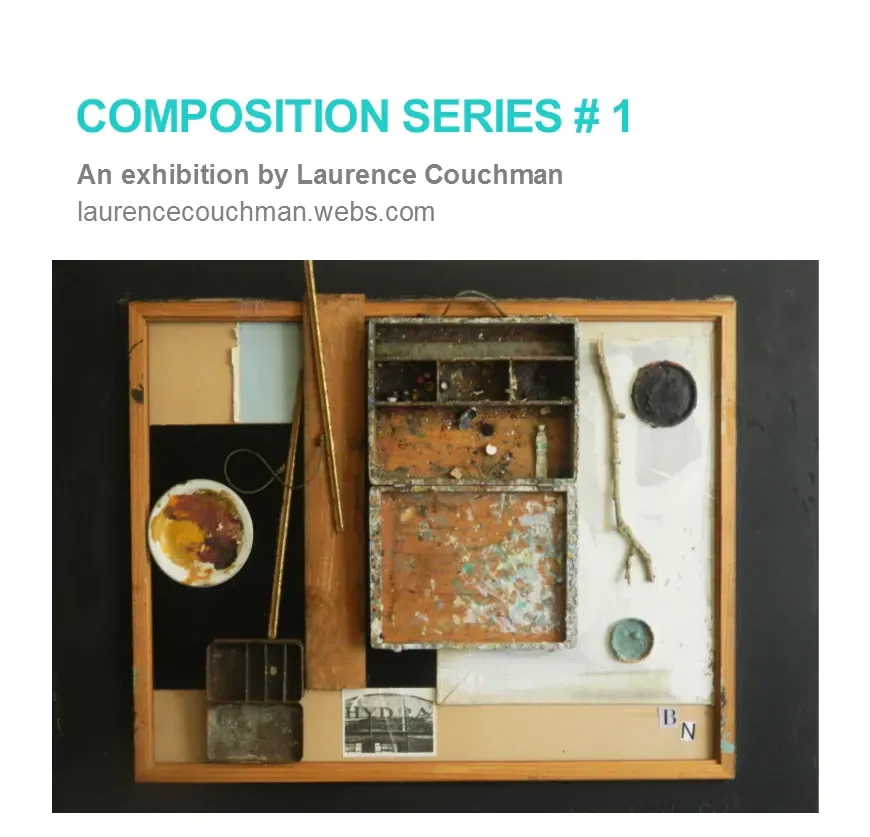Art Critic opens doors to Dada

Onehunga artist Laurence Couchman, 57, is finishing a provocative line-up of Dada-inspired works to hang in the private Mount Eden gallery of renowned art critic and writer, Warwick Brown. November 21 will mark the first art show Ellerton Gallery has seen in ten years.
As Brown says, it was seeing Couchman’s raw talent and perseverance in the found-object field that inspired him to throw open the doors of the crisp white space he built to support the work of friends and house treasures by Binney, Hotere, Brown, Frizzell and other New Zealand icons.
“What this late-starter has done is take up this outmoded and almost forgotten area of art history and breathed new life into it” says Brown. “The style is very retro – Laurence has provided us with a blast from the past based on early modernist ideas, created in the heart of Onehunga!”
Composition Series #1 embraces the art of assemblage, an early to mid- twentieth century practice more commonly known as found-object work or collage. Couchman traded his signature American abstract expressionist painting style for work Brown says reminds him of the best of the 1916-1924 ‘anti-art’ movement known as Dada Art. In particular, Couchman’s work bears resemblance to that of Kurt Schwitters.
Journeying down another stylistic path was a brave move for an artist who struggled with and publicly championed recovery from Social Anxiety. Painting was to him both a means of saleable self-expression and a cathartic experience. But solace is also found in the highly intuitive arrangement and placement of objects like pages torn from E.E Cummings verses, picture frames, bullet ridden computer shells and more.
“Assemblage – in this case vertical assemblage – feels just as good to create as painting. When you put a mark on a canvas you are arranging things anyway….it becomes therapeutic through the arrangement of the objects.”
Couchman’s relationship with assemblage began at his first solo show in a Mount Eden church hall where he experimented with placing paint tin lids, linseed stained rags and an old train ticket to Cairo on a black board. It peaked Brown’s interest enough for him to advise the artist to follow his heart.
“What I will say about that show was that although the painting was good, one work stood out - Moon over the Nile. The rest of the work then suggested that Laurence’s personal expression was being suffocated. I told him as much, saying there was nothing of him in the work. If their art is to be meaningful artists have to find their own voice.”
Couchman agrees that while he didn’t quite understand what his voice was 18 months ago, it has emerged through this retro genre.
“It wasn't until nearing the end of completing this series of works I realised my ‘self’ was creeping in - the works were becoming autobiographical. The self-appearing is what cannot be said in any other way: objects and their placement replace words. The meaning of the work comes from trusting consciousness in object and placement to convey the narrative of who I am.”
Brown feels that there is definitely a market for such work today because of the timing and retrospective elements of the work.
“The world had got so far ahead of itself that the passion for avant-garde had exhausted itself to some extent – this has been the case since the post modernism of the 80’s. So it is now a valid time to look back and really appreciate Dadaism.”
Couchman and Brown hope to see everyone from art dealers and critics, artists and the local community coming in to appreciate the revival – poignant for Couchman for finding his most original voice yet, and even more so for Brown who until very recently was unable to share his gallery space with friends due to his wife Kitty’s illness.
“Ellerton Gallery will open again because I was so inspired by Laurence’s work. I decided I wanted to let him have a space that will show his work off to its full potential“.